#60 (tie): 'La Dolce Vita': The Reveal discusses all 100 of Sight & Sound’s Greatest Films of All Time
Federico Fellini's controversial 1960 masterpiece found thrills and alienation in the lives of Italy's beautiful people.
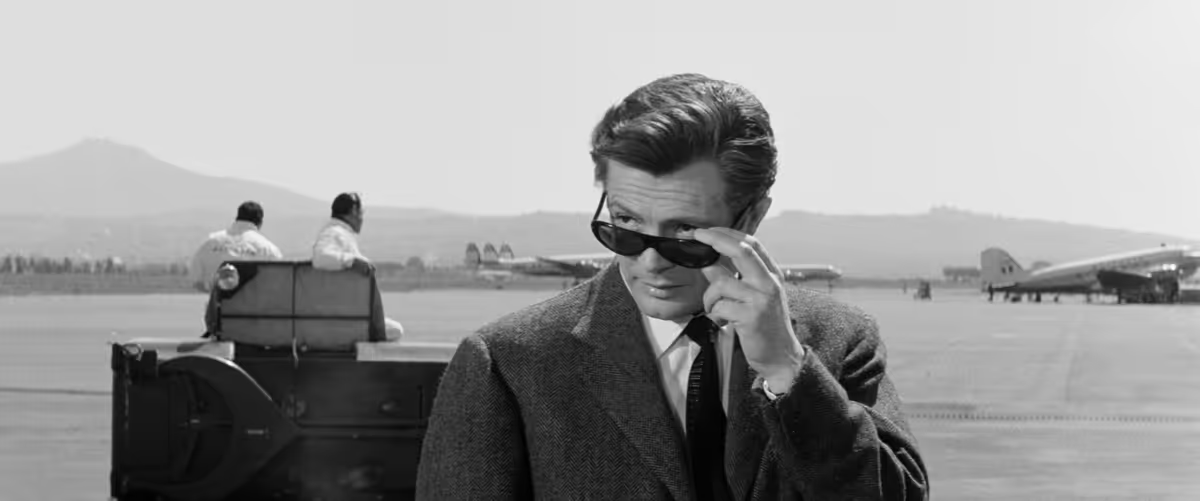
On December 1st, 2022, Sight & Sound magazine published “The Greatest Films of All Time,” a poll that’s been updated every 10 years since Bicycle Thieves topped the list in 1952. It is the closest thing movies have to a canon, with each edition reflecting the evolving taste of critics and changes in the culture at large. It’s also a nice checklist of essential cinema. Over the course of many weeks, months, and (likely) years, we’re running through the ranked list in reverse order and digging into the films as deep as we can. We hope you will take this journey with us.
La Dolce Vita (1960)
Dir. Federico Fellini
Ranking: #60 (tie)
Previous ranking: N/A
Premise: Marcello (Marcello Mastroianni), a once-ambitious writer of considerable talent, has put aside serious pursuits to work as a journalist covering the most sensational aspects of life in Rome. These include visiting movie stars, partying aristocrats, fraudulent miracles, and other aspects of the fast-paced world of cosmopolitan Italy as the 1950s become the 1960s. Women float into and out of Marcello’s life throughout the film. These include Emma (Yvonne Furneaux), his despondent fiancée; Sylvia (Anita Ekberg), a glamorous and publicity-hungry movie star; and Maddalena (Anouk Aimee), a similarly free-living heiress. As the film progresses, Marcello’s descent into the decadent lifestyle he documents deepens, as does a spiritual yearning compounded by a mid-film tragedy.
Keith: On the Criterion Collection edition of La Dolce Vita, you’ll find a 1960 episode of the Belgian interview program Second Look dedicated to La Dolce Vita. The memory of its release a few months earlier is still fresh, and so is the reaction, which the show’s subjects speak of in much the same way others speak of the premiere of Igor Stravinksy’s The Rite of Spring. Asked what she thought of “the scandal” of La Dolce Vita, journalist Camilla Cederna describes a raucous premiere in Milan that led the audience to boo and one attendee to spit in director Federico Fellini’s face. Then the film won the festival’s biggest prize the next day. Cederna continues by saying, “Italy was split in half the day after La Dolce Vita. There were endless arguments, broken friendships, it became a national issue. Rivers of ink have been spilled on the subject.”
If Fellini is to be believed, he did not see this coming. He denies trying to create a scandalous film, even saying “I still haven’t figured out why La Dolce Vita scandalized people. Perhaps I’d rather not figure it out, because if I were to understand that La Dolce Vita caused a scandal merely because it is the artistic product of a free man who dares look at things for what they are… If this causes a scandal, one must draw some rather discomforting conclusions.”
The Reveal is a reader-supported newsletter dedicated to bringing you great essays, reviews and conversation about movies. While both free and paid subscriptions are available, please consider a paid subscription to support our long-term sustainability.
La Dolce Vita has been canonized for so long that, like The Rite of Spring, it’s kind of hard to think of it as shocking—until you revisit it. That’s less because it’s explicit—by today’s standards it’s not—than because of the journey Marcello takes over the course of the film. His frivolousness and carelessness with others calcifies from the habits of a callow young man (albeit one on the verge of aging out of youth) to the despairing actions of a lost soul. To borrow another detail from Cederna, some members of the clergy condemned the film as amoral while others upheld it as a deeply moral work.
To my eyes, this is a “Stop, you’re both right situation.” Fellini is concerned with Marcello’s well-being. La Dolce Vita also makes the after-hours world Marcello inhabits look appealing, or at least seductive, much of the time. There’s a reason why the film’s most famous sequence is Ekberg’s Sylvia frolicking in the Trevi Fountain in a dress that barely contains her. Marcello seems to understand that this world is devouring him, but the film’s never a simple morality tale. It never really gives Marcello an exit. His friend Steiner (Alain Cuny), a serious, deeply moral family man, appears to be an example of the life he should be living, then Steiner’s story takes a tragic turn. The film’s final moments seem to give him a chance to walk away, but does it? I’m sure we’ll get into that scene in more detail, but I’m not sure it’s insignificant that Marcello can’t hear a word the teenaged Paola (Valeria Ciangottini) says.
Scott, does the scandal caused by this film at the time surprise you? Were those who condemned it as immoral off base? Also, has your view of this film changed? Roger Ebert revisited this film, a long time favorite, in 1997. That piece ends with a description of how his feelings about the film changed as he got older. “Movies do not change, but their viewers do,” he writes, and this seems like one of those movies, like The Graduate, that looks different as the years go by. Was that your experience this time?
Scott: Like many of the great canonical classics, I first saw La Dolce Vita as an undergrad in the early ‘90s, when I’d spend my afternoons on the 7th floor of the University of Georgia library and work my way through their catalog of VHS and laserdisc offerings. My first Fellini experience remains one of the most special of my life: I drove to the High Museum from the Atlanta suburbs to see Amarcord, and was thoroughly enraptured by the film, particularly the isolated moments of visual poetry. (The changing of the seasons, represented by puffballs dropping from the skies, left a strong impression.) When I think back to that time, when I was devouring movies like a bag of potato chips, I often wonder how much I processed them thematically because it was really those “moments” that I wound up carrying with me over time. La Dolce Vita gives you plenty of them, from the statue of Jesus dangling under the helicopter in the opening sequence to the generously proportioned Anita Ekberg at play in Trevi fountain.
So to answer your question in this roundabout way, I don’t think I gave much thought to the morality of La Dolce Vita until I was closer to Marcello Mastroianni’s age in the movie. And even then, it’s not really at the top of my mind when I watch it, because the issues that might have provoked an Italian audience in 1960 don’t have the same impact now, just as the uproar that greeted Jean Renoir’s The Rules of the Game in 1939 is more studied now than felt. That’s not to say morality isn’t an important theme here, but the film remains to me more an expression of deep existential malaise, tied to a lead character whose decadence and womanizing covers up a gnawing emptiness at the core of his being. And, to take nothing away from Mastroianni’s performance, I would say that Fellini uses the city and this parade of incredible setpieces as either an external expression of his internal life or a representative sample of the environment that’s engulfing the culture.
And yet… are you not turned on by it a little? Maybe that’s where the morality police are blowing the whistle. La Dolce Vita may be an epic lament about the superficial excesses of celebrity culture and elite living i Rome, but Fellini can make it seem like one of those anti-drug dramas that are honest about the fact that a high is something a reasonable person can be coaxed into chasing. The film establishes this dusk-till-dawn pattern where the rambunctious parties and events in the evening inevitably lead to massive hangovers and regret as the sun comes up. But surely there are plenty of men who’d love to switch places with Marcello, who has such an ease with beautiful women that he can peel off into the night with a big movie star or find someone at a party who’s inevitably eager to dance and sleep with him.
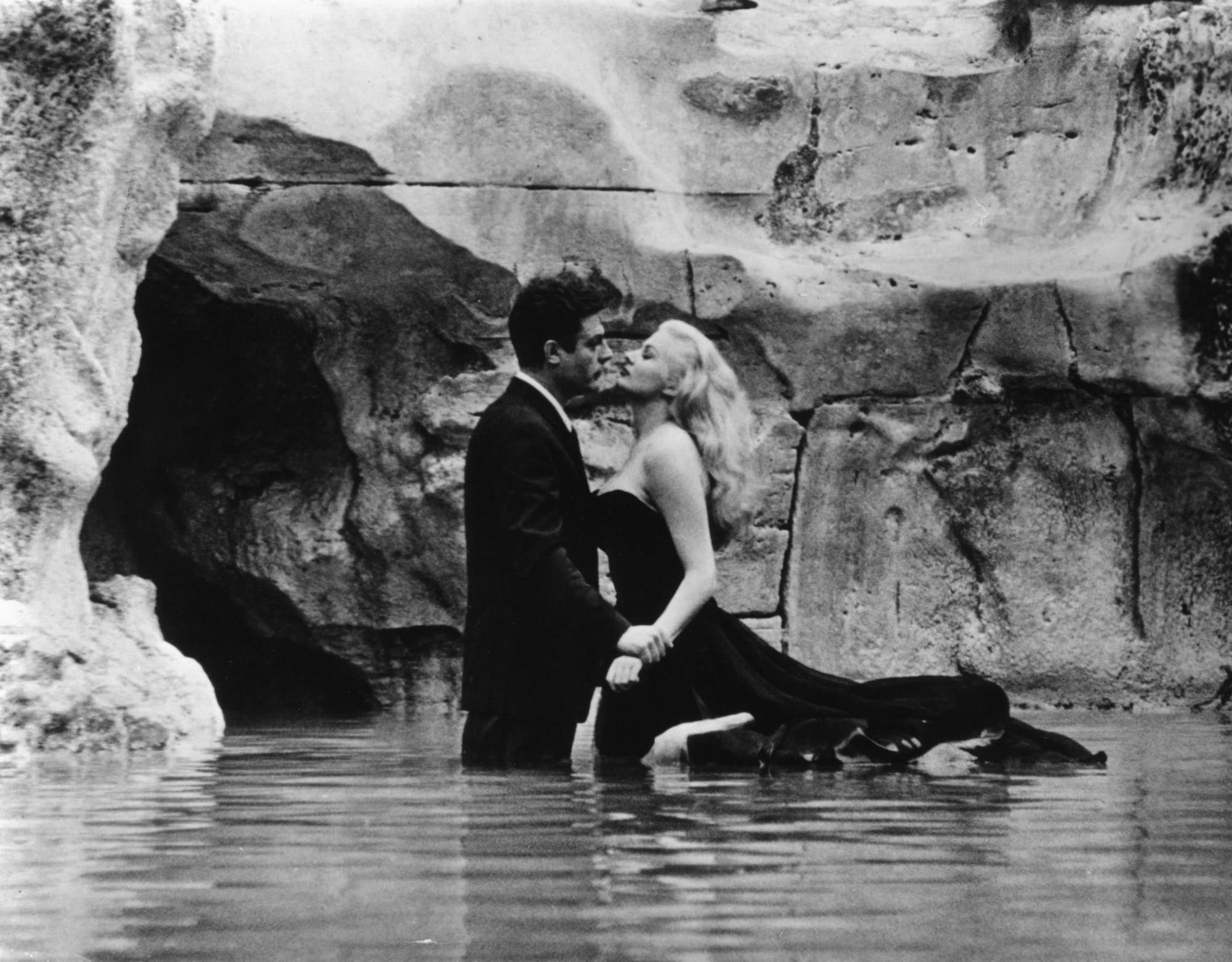
Over the course of the film, however, you start to feel less envious. Marcello’s night out with Sylvia Rank may produce the lasting memory of her splashing around in the fountain, but it also leads to an ugly scene at the hotel in the morning, when Sylvia’s seemingly indifferent boyfriend is waiting to slap her and assault him. And that entire sequence follows one earlier in the film when Emma, his pitiable fiancée, has fallen into such despair over their relationship that she’s overdosed. Marcello responds to Emma’s emotional state throughout the film with a cool, cruel disregard that seems ingrained in him, perhaps from a father who turns up looking to have the sort of wild, tomcatting night that most men his age are wise to give up decades before. The one shred of hope we might get from the business from his father is that maybe Marcello will recognize the path that he’s on and the grim place it might lead.
Then again, what do you make of what happens to Steiner, Keith? We are introduced to Steiner as he hosts a sophisticated party in his home, where musicians, intellectuals, and other cosmopolitan types are mixing it up and trying interesting new things, like listening to a recording of forest sounds and registering how it makes them feel. Marcello plainly admires Steiner, and when his two children wander out of bed, the whole scene stokes Emma’s interest in a family and seems to do likewise for Marcello, who’s thinking this admirable man has it all figured out. There are signs in that party that Steiner does not, in fact, feel like a man to be admired, but nothing to suggest the shock of what's to come, when Marcello learns that Steiner killed his children and himself.
I can imagine that revelation must have rocked audiences pretty hard in 1960, and Fellini gives it emotional weight while also leaning on the ugly public reaction to the event, with the paparazzi swarming around Steiner’s widow. We talked about this a little bit before starting this conversation, Keith, but would you say La Dolce Vita is Fellini’s best work? I’d have stumped for 8 ½ for most of my life and a repertory screening of Nights of Cabiria turned my head quite a bit, but I think it unifies the phases of his career so well— you have the expansion of visual style and scope from his later films while maintaining a connection to identifiable characters that come out of his brief neo-realist phase. Also, of the many standalone setpieces in La Dolce Vita, what caught your eye the most this time around?
Keith: Steiner’s murder/suicide complicates any attempt to read La Dolce Vita as a straightforward morality tale. Until this development, it’s easy to see Emma as the woman Marcello should be with and an existence akin to Steiner’s the life he should be leading. Maybe this is la dolce vita, writing serious work and raising children with a devoted partner, not the endless party he’s been attempting to enjoy. But Steiner’s fate casts the way we see him doting on his children in a new light. And if this — madness, murder, and heartbreak — is the outcome of doing the right thing, why would anyone do the right thing? But where does running in the opposite direction get Marcello? The night out with his father offers one chilling preview of what’s to come. Sometimes the hangovers start before the night even ends.
We’ll get more into 8 ½ down the road. It’s the only other Fellini to break the poll’s top 100. (Amarcord, at #157, also landed in the top 250.) For now, I’ll say it’s one of a handful of films that expanded my idea of what a film could be. (Others in this category: Stranger than Paradise, and Where is the Friend’s House?) It also plays like a point of departure for Fellini. I’d never seen Fellini’s 1983 film And the Ship Sails On so I watched it over the weekend. Like other post-8 ½ films, it takes plays purely in Felliniland, a carnivalesque, studio-bound place of high emotions in which images of stunning beauty and unclassifiable grotesquery brush up against each other. Sometimes it’s even hard to tell the former from the latter.
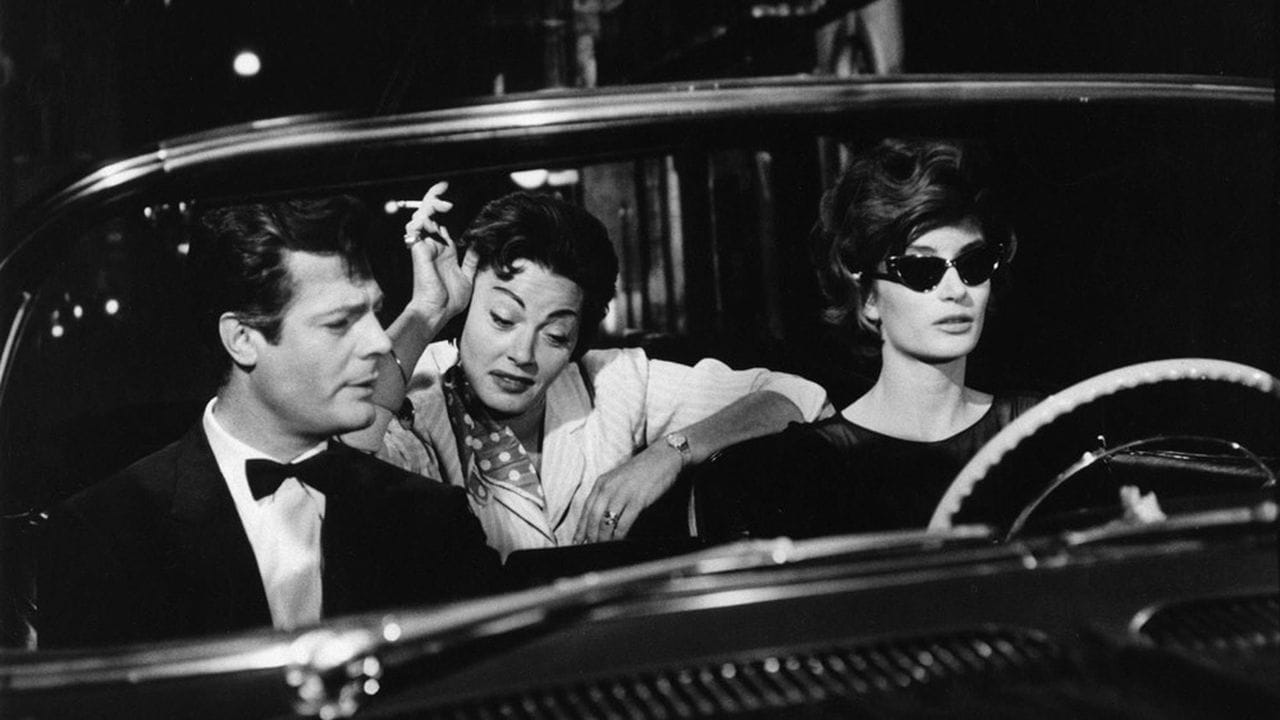
You can see these elements in La Dolce Vita in nascent form, just as you can see lingering elements of his earlier films. The many parties Marcello attends are filled with beautiful people but also, for want of a better word, weirdos like Frankie (Alain Dijon), the actor who shows up as Marcello attempts to woo Sylvia as they party at the Baths of Caracalla. He’s attractive and vital but he also looks like a satyr from an Ancient Roman sculpture that’s come to life. The film takes place in a slightly bent version of what we’d recognize as reality. Any resemblance, for instance, between the apparatus and crew assembled to document that false miracle and a film crew is surely not coincidental. I love Fellini movies on both sides of the 8 ½ divide, but I think La Dolce Vita has a goldilocks zone quality that helps make it the director’s best film.
La Dolce Vita rarely circles back to the same location more than once apart from one: the Via Veneto, the glamorous Roman street that the film helped make synonymous with “Il Boom,” an era in Italy’s cultural history when it attempted to escape the shadow of the past by plunging headlong into modernity. What we see in the film is Fellini’s full-scale reproduction of Via Veneto at Cinecittà. It’s the place where different elements of the moment — celebrity, fashion, new media, cool cars, cutting edge music — all flow together. But it’s also the point from which the general condition captured by La Dolce Vita radiates. The mix of merriment, sexual energy, and spiritual malaise radiates from here, spilling out into locations both new and ancient. Whether you see it as the spirit of a new era, a doomed retreat from old values or some impossible-to-separate mix of the two, this is its point of origin.
Scott, what do you think of the Via Veneto scenes? And which of the other locations stand out to you when you think of this movie? This time through I found the aristocrats’ party at the castle particularly striking. This movie predates The Leopard by several years, but those moments almost play like a sequel to that film. These symbols of the past have become mere backdrops for parties filled with people seemingly committed not to thinking about the past. Or, for that matter, thinking much about the future. Also, we should talk about the ending. What is that strange creature that washes up on the shore? And why does Marcello make the choice he does, if it’s a choice at all?
Scott: I guess the Via Veneto scenes do fall under the “impossible-to-separate mix of the two” category, given how thoroughly Fellini considers both the seductive allure of these glamorous locales and the spiritual vacancy this lifestyle seems to invoke. It ends up being a point of departure during the evening that Marcello meets his father and they wind up going to a nightclub, where the evening picks up and then descends to a pretty dark place. Yet the location itself, which I didn’t realize until now was recreated as a set, is so appealing that moviegoers in 1960 could be forgiven for wanting to beeline there the next chance they had to visit Rome. Oddly enough, the Via Veneto reminded me of Mel’s Drive-In in American Graffiti, the sparkling hub of George Lucas’ Modesto, California, which is the place where the characters meet and socialize before heading out into the night. While nostalgia doesn’t play a role in La Dolce Vita, there’s a similar sense of an inviting place that’s recontextualized by the sobering events that happen outside of it.
One of the standout setpieces to me on this viewing is one where Marcello joins the huge media spectacle that descends on a site where two children claim to have spotted the Madonna. La Dolce Vita often juxtaposes the sacred and the profane, starting with that opening sequence with the helicopter carrying the statue of Jesus past ancient ruins and sexy sunbathers. But here you get this heightened scene where a media circus surrounds a situation that’s nonetheless packed with ordinary true believers who want to bear witness to a miracle. Marcello is decidedly not one of those true believers, but another journalist scrambling to get a good angle on this news scene. But his fiancée Emma takes a different tack, using the opportunity to pray to the Virgin Mary to deliver his heart to her. There doesn’t seem to be any miracle here, other than maybe the hard rain that shuts down the spotlights and puts an abrupt end to this fiasco. And once again, in one of Fellini’s sober mornings, the one tangible takeaway is the body of a sick child who has been trampled to death rather than cured.
I wrote about La Dolce Vita for us a few years ago—actually, I wrote about it for The Guardian, but they didn’t realize they’d already assigned a piece to another writer, so I posted it here—and the narrative rhyme that stuck out for me then was the role the paparazzi plays in covering events with the same frenzied tenor. It seems entirely appropriate for a movie star like Sylvia to step onto the tarmac toward the beginning of the film and get surrounded by photographers willing to step over each other to get a good shot. What harm could there be in that? Yet there’s so little difference to the way they respond to the tragedy at the end that Steiner’s wife smiles at the attention (“Did you think I was an actress?”) before a police car carries her off to receive the most devastating news of her life. You think about events like, say, Princess Diana’s death, and it’s the same dynamic, a gaggle of photographers who behave with the same pitiless aggression no matter the circumstances.
One thing that occurred to me while I was watching La Dolce Vita is the timing of the film, which came out the same year that another Italian director, Michelangelo Antonioni, shocked the international film community with L’Avventura, which we covered earlier for this list project. Was there something in the water? Fellini and Antonioni are not two directors whose styles you would confuse, but they seem to be using cinema as a way to suggest a common existential malaise. And for as much as you associate Fellini with excess and grand spectacle, many of the standout sequences in La Dolce Vita emphasize loneliness and alienation, especially once Marcello steps away from one party or another. I love the scene, for example, when Marcello meets Maddalena at the castle party and they wander off into these vast rooms that function as an echo chamber. There’s something fun and flirtatious about Maddalena whispering words to Marcello from another room, but something uncomfortable, too. You get the impression that Marcello goes to all these shindigs to keep from having to be alone with his thoughts.
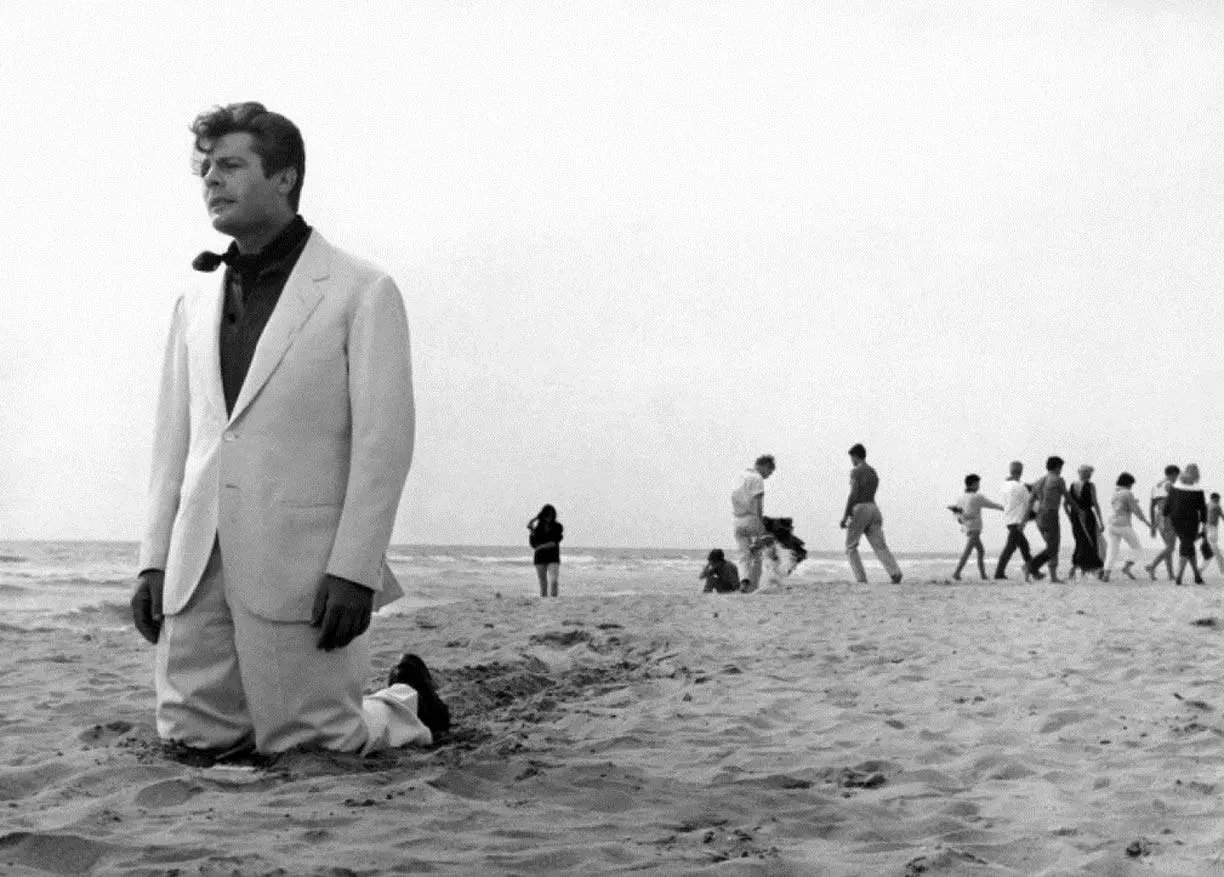
As for the ending, I can’t say I completely understand the leviathan part of it, which seems too genuinely strange and alien to chalk up to yet another frivolous incident that Marcello witnesses. While it definitely is one of those incidents— there’s talk of how much money this creature might fetch the people who dragged it ashore—I know there are some Biblical implications that are not my area of expertise. Nonetheless, I am struck by the contrast between the excitement over this discovery and Marcello’s response, which is much more sober and regretful. We’ve been witnessing his diminishment over the course of three hours and the look on his face makes him seem somewhere between hung over and condemned. This leads to a moment that's a little easier to interpret, as he encounters the young, smiling, innocent-seeming waitress from earlier in the film and she’s trying to communicate to him across the water. He doesn’t understand what she’s saying and eventually he has to retreat back to his regrettable fate. What did you make of it, Keith? And what’s next for us?
Keith: I think it’s the ending that makes me wonder how anyone could read it as aspirational. Marcello ends the film as a hollowed-out version of the man we meet at the beginning of the film and it feels like he’s being marched off to live a wraith-like existence for the rest of his life. A symbol of another life and another Italy speaks to him but he can’t even hear a word she says. And there’s a monster on the shore. It’s all extremely foreboding. Maybe I just have a hard time separating the film’s giddy highs from its crushing lows. That it ends with the latter doesn’t seem accidental.
Next, you ask? How about about Julie Dash’s 1991 film Daughters of the Dust to continue our run through films tied at the #60 spot?
Previously:
#95 (tie): Get Out
#95 (tie): The General
#95 (tie): Black Girl
#95 (tie): Tropical Malady
#95 (tie): Once Upon a Time in the West
#95 (tie): A Man Escaped
#90 (tie): Yi Yi
#90 (tie): Ugetsu
#90 (tie): The Earrings of Madame De…
#90 (tie): Parasite
#90 (tie): The Leopard
#88 (tie): The Shining
#88 (tie): Chungking Express
#85 (tie): Pierrot le Fou
#85 (tie): Blue Velvet
#85 (tie): The Spirit of the Beehive
#78 (tie): Histoire(s) du Cinéma
#78 (tie): A Matter of Life and Death
#78 (tie): Celine and Julie Go Boating
#78 (tie): Modern Times
#78 (tie): A Brighter Summer Day
#78 (tie): Sunset Boulevard
#78 (tie): Sátántangó
#75 (tie): Imitation of Life
#75 (tie): Spirited Away
#75 (tie): Sansho the Bailiff
#72 (tie): L’Avventura
#72 (tie): My Neighbor Totoro
#72 (tie): Journey to Italy
#67 (tie): Andrei Rublev
#67 (tie): The Gleaners and I
#67 (tie): The Red Shoes
#67 (tie): Metropolis
#67 (tie): La Jetée
#66: Touki Bouki
#63 (tie): The Third Man
#63 (tie): Goodfellas
#63 (tie): Casablanca
#60 (tie): Moonlight



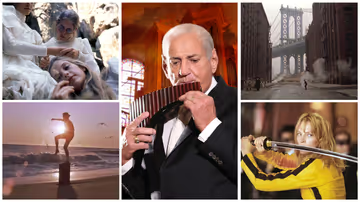
Discussion